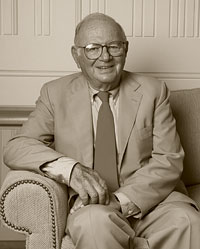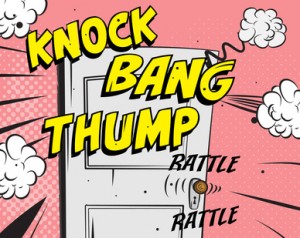A couple of times recently, I’ve heard Australians complain about the Australian online engagement firm, Bang the Table (BTT) (see https://bangthetable.com/). I’ve done their training and greatly admire their work, which I see as directly complementary to my more “hands-on” approaches.
I decided it was time to sort things out in my own mind, so I spoke with Crispin Butteris, one of the Directors, last week.
This blog reflects my own thoughts and some ideas that came out of our conversation.
In one of my recent conversations, a resident complained about the “thin” website that Bang the Table had prepared for a local council in Western Australia. I explained that BTT (like my own firm) has many options to offer.
When a client chooses the weakest option in the catalogue, there is little we can do.
We have the same problem all the time: the good parts get defunded before we even begin a community engagement process.
In another conversation – at a public rally, actually – a disgruntled resident complained about the very small sample in a survey of attitudes toward a medical facility in Sydney. Again, the “reach” of the survey would have been a matter for the client, again, a local municipality.
That got me thinking about my own experiences with community engagement. The appalling things people have said to me in public forums:
- We know you’re a spy from HomesWest [the state public housing authority]”. We have that on good authority/
- Or: You’re just another hired gun, paid to do what the council wants you to do. You have no integrity.
- Or: We’ve heard from a reputable source that you’re being paid by Developer X. We have spies in high places.
And so forth.
Both Crispin and I have had to grow thick skins to take the abuse that flows in these situations.
Because (and here’s the rub), we have to keep our gloves on, while members of the “public” can take theirs off. It can be very challenging and frightening (especially for young professionals).
The more I think about it, the more I felt that we needed a good conversation – maybe at an IAP2 conference or a PIA conference – about these matters.
Consider the following:
It is not without precedent for one individual or a small group of highly activated community members to attack us. It seems to happen when they feel threatened by the transparency created by an open online process. Or, for that matter, by any authentic process, online or embodied. In those sorts of situations, people who aim primarily to disrupt lose their ability to frame and control the discourse around an issue.
Crispin and agreed that what we do can be very disruptive to “activist practice.” Both of us have been roundly condemned by a small group of residents when their position was exposed as being unrepresentative of broader community interests. We know that our other colleagues in their field have similar experiences. Sometimes we have these encounters with the same people over the same planning matters over many years.
Crispin also explained that by taking the engagement process online (and adequately publicising opportunities to get involved), the frame of reference for the discussions is expanded beyond those with an immediate interest. It puts their interests and their scale into a much broader context.
At this stage, there are a number of different possible outcomes:
(1) The activists are proven correct. The rest of the community rallies behind them, both in terms of numbers (lots of people express their interest) and sentiment; or
(2) the activists are proven wrong. The rest of community rises up to oppose them, a great tidal wave of alternate opinion washes them away; or
(3) the activists are proven to be lone voices in the wilderness. Nobody else cares about the issue. We agreed that this is as bad an outcome for the activists as being proven wrong. Community ambivalence kills the issue.
Of course, the client (the consulting organisation) needs to do a good enough job of publicising the engagement process. If not, all bets are off!
I am an activist myself and involved in a number of campaigns in New South Wales – from opposition to coal seam gas mining to keeping hospitals in Sydney’s northern beaches, to trying to reform the reform of the NSW planning system. (OMG, that’s a job and a half!)
Wise ones among us admire the work on Deep Democracy: accepting the will of the majority along with the wisdom of the minority.
Coming to Public Judgment
For my part, I’m leaning strongly in the direction of “Coming to Public Judgment”.
I’m currently reading Daniel Yankelovich’s classic text on that subject (see https://www.viewpointlearning.com/about-us/who-we-are/daniel-yankelovich/).
That’s different from “public opinion”.

Yankelovich’s makes a salient point early in the book: an informed citizenry is not all that we need. We need people genuinely to understand what’s being discussed. An engaged citizenry is a good start.
So, I say, stop banging on about Bang the Table.
And bang on instead about the content of what’s being discussed.
Let’s get educated.
Let’s build and strengthen our communities’ capacities to understand – really understand – what’s happening in our communities.
And let’s stop shooting the messengers.

“Let’s get educated” I agree! An engaged community is also a connected, appreciative and robust community.
I can see how electronic/blog/twitter community consultation has a marvellous way of dethroning ruling opinion formers/tyrants when community issues need to be put on a broader context, which happens in the city and in rural and ex-urban areas where attendance at evening or daytime events may be limiting to say stay at homes/night shift workers. It does seem to need to be well-resourced and well advertised regarding access to electronic ‘voting’ portals – but we have seen the success of ‘pop up’ voting in art galleries where peoples’ choice awards are made.
For the ‘stay at homes’ perhaps mobile voting booths?
Not everyone has a mobile phone, or a PC, and yet these people have opinions that need to be heard on a community issue. Otherwise it’s just the “‘technological up to date’ that join in the debate!”
Also – the technology has to address young people – a lot of forums assume the under 18 year olds are invisible/dont have a stake in developments/proposals.
As we live in a pluralist society, and there are areas and people of disadvantage in terms of access to internet and webinair, a combination of consultation need not be expensive – for example, sit in their space, attend their meetings as a guest, by all means utilise electronic ways of eliciting ideas and comments. And do not be afraid to insist on mutual respect. It happened to me recently – a vocal and opinionated person in a public meeting was uttering rhetorical statements rather than questions, and after a while I was sick of being targeting with abuse about my profession.
I finally responded by stating there was no point in answering his statement as he really didn’t want to hear anything but the sound of his own dissent.
I then defended the process and the players. Surprisingly, the meeting applauded. So there should be a sense of fair play in a public forum and respect during the process in both directions. It should also be made clear what the limitations are while accepting the responses and ideas.
Community consultation is a minefield. The problem with on-line surveys is that they frequently require yes/no or 1-5 answers. There is no space for discussion. One often has the feeling that the questions are written to gain the answers the client wants.
Consultation only works when the consulter (ie the client) is genuinely interested in the answers and open to suggestions. Too often Councils and Government really want to inform us about what they’ve already decided to do.
This leaves us with a choice – participate even though it may be useless or stay away even though it might have been worthwhile. Hobson’s choice!